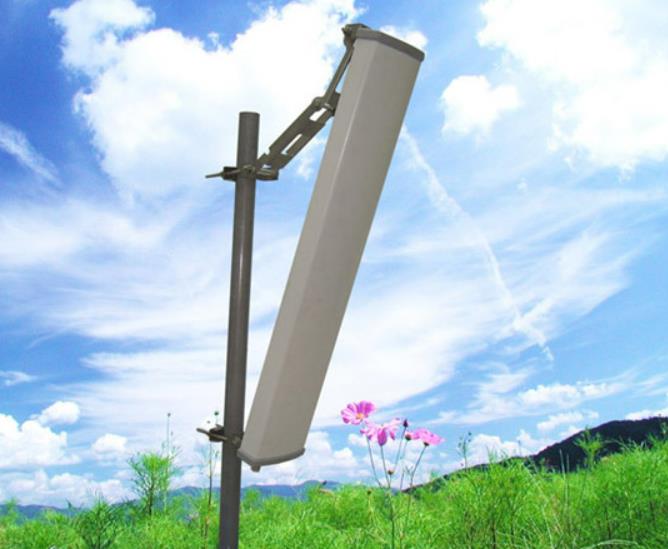Empowering Connectivity: Navigating the Realm of Mobile Base Station Antennas
In the dynamic world of wireless communication, where the exchange of information and data happens at the speed of light, mobile base station antennas emerge as the unsung heroes that orchestrate this digital symphony. These antennas, perched atop towers and elevated structures, serve as the beacons of connectivity, uniting devices and users across vast distances. In this comprehensive exploration, we delve into the intricate world of mobile base station antennas, deciphering their anatomy, functionality, and the pivotal role they play in shaping our connected experiences.

1. Crafting Connectivity: The Essence of Mobile Base Station Antennas
At its core, a mobile base station antenna is a finely tuned instrument that creates cellular connectivity by establishing cells or groups of cells within a wireless network. These cells function as geographic areas through which wireless signals flow, facilitating communication between mobile devices and the network. The mobile base station antenna acts as the gateway, channeling signals to and from these cells, ensuring seamless data transfer and communication.
2. The Towering Presence: Installation and Placement
Mobile base station antennas often stand tall, positioned on towers or raised structures that offer a vantage point for optimal signal propagation. The elevated placement is crucial for expanding the coverage area and minimizing signal interference. The strategic location ensures that the antenna can reach a wider audience, whether in urban centers, rural landscapes, or even remote areas.
3. Decoding the Antenna Architecture
3.1 The Vertical Array of Dipoles
Central to the functionality of a mobile base station antenna is its vertical array of dipoles. These dipoles are the essential elements that emit and receive electromagnetic waves, acting as the conduits of communication. The arrangement of these dipoles allows for the creation of multiple beams, each targeting a specific area or direction.
3.2 Operating Across Frequency Bands
One of the remarkable features of mobile base station antennas is their ability to operate across various frequency bands. This adaptability ensures compatibility with different wireless technologies and devices. From 4G to the blazing speeds of 5G, these antennas seamlessly navigate the frequency spectrum, delivering the best possible connectivity to users.
3.3 Ports and Beams: Enhancing Capacity
Mobile base station antennas are equipped with multiple ports and beams, each serving a unique purpose. Ports allow the antenna to support multiple frequency bands and provide simultaneous connectivity to various devices. Beams, on the other hand, shape the direction of the transmitted signal, optimizing coverage and capacity in specific areas.
4. A Network Capacity Boost
4.1 Expanding Coverage Area
The primary function of a mobile base station antenna is to enhance the coverage area of a wireless network. By creating cells that overlap in strategic patterns, these antennas ensure that users can stay connected across vast geographic regions. This expanded coverage is particularly critical in densely populated urban areas and remote locations.
4.2 Improving Network Capacity
The surge in mobile device usage and data consumption demands a robust network capacity. Mobile base station antennas play a pivotal role in meeting this demand by efficiently distributing signals to users within their coverage area. Through the strategic deployment of antennas, network operators can enhance data speeds, reduce congestion, and offer a seamless user experience.
5. Expertise in Connectivity
5.1 Network Planning and Optimization
The deployment of mobile base station antennas requires meticulous planning and optimization. Network engineers analyze data traffic patterns, user density, and signal strength to strategically position antennas for optimal coverage and capacity. This expertise ensures that users enjoy a consistent and reliable connection.
5.2 Continuous Evolution
As technology evolves, so does the world of mobile base station antennas. With the emergence of 5G, these antennas are tasked with delivering ultra-fast data speeds, low latency, and enhanced connectivity. The expertise of engineers and technicians ensures that these antennas can seamlessly integrate into evolving network architectures.
6. Conclusion: Pioneers of Connectivity
In the ever-evolving landscape of wireless communication, mobile base station antennas stand as pioneers, shaping the way we connect, communicate, and navigate our digital lives. Their towering presence, intricate architecture, and adaptive capabilities form the backbone of modern networks, driving seamless data transfer and enabling our insatiable appetite for connectivity. As we continue to explore new frontiers in communication technology, the mobile base station antenna remains at the forefront, ensuring that the world remains connected, informed, and united in the vast tapestry of digital communication.

 Mobile Signal Booster
Mobile Signal Booster